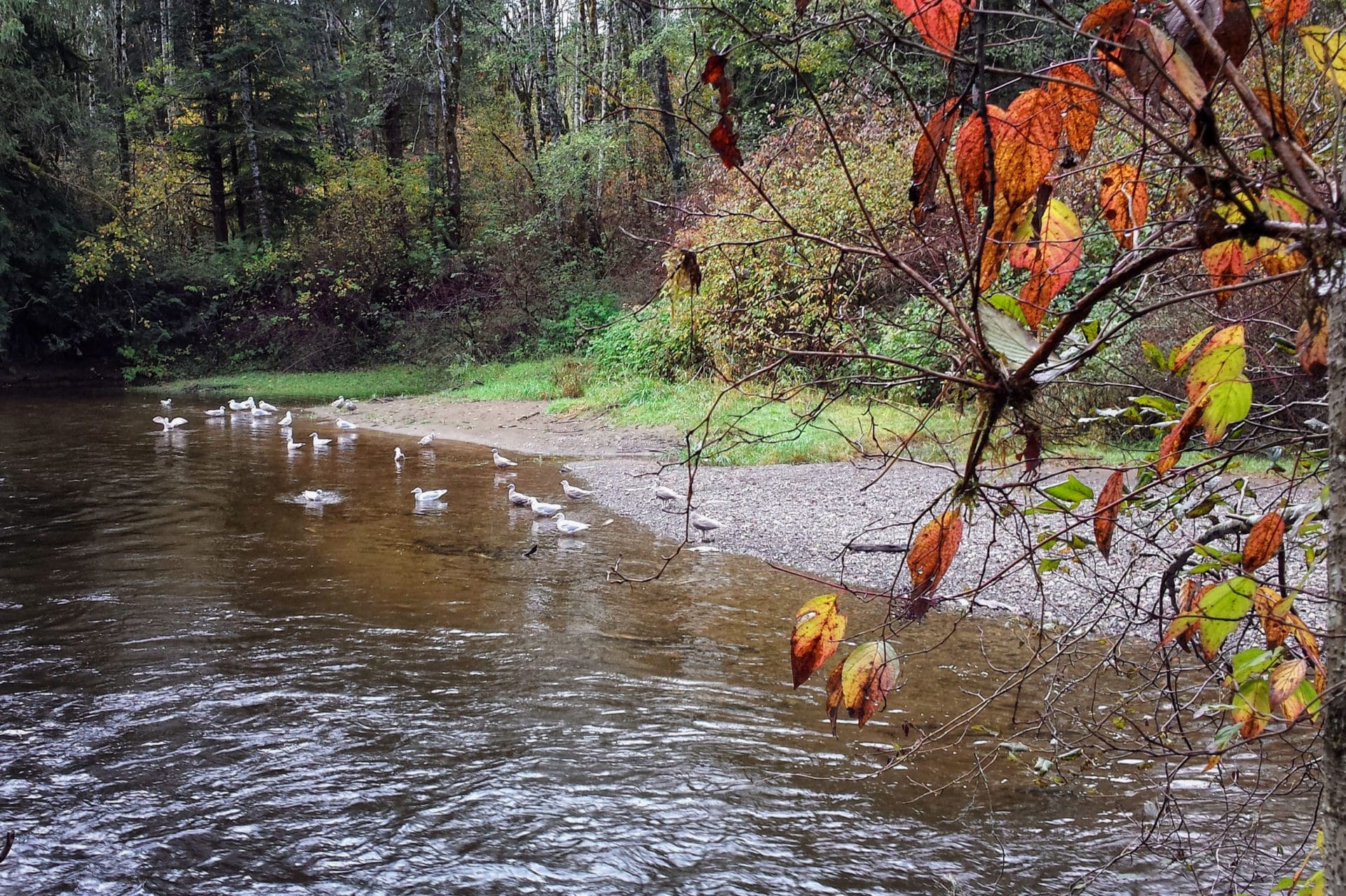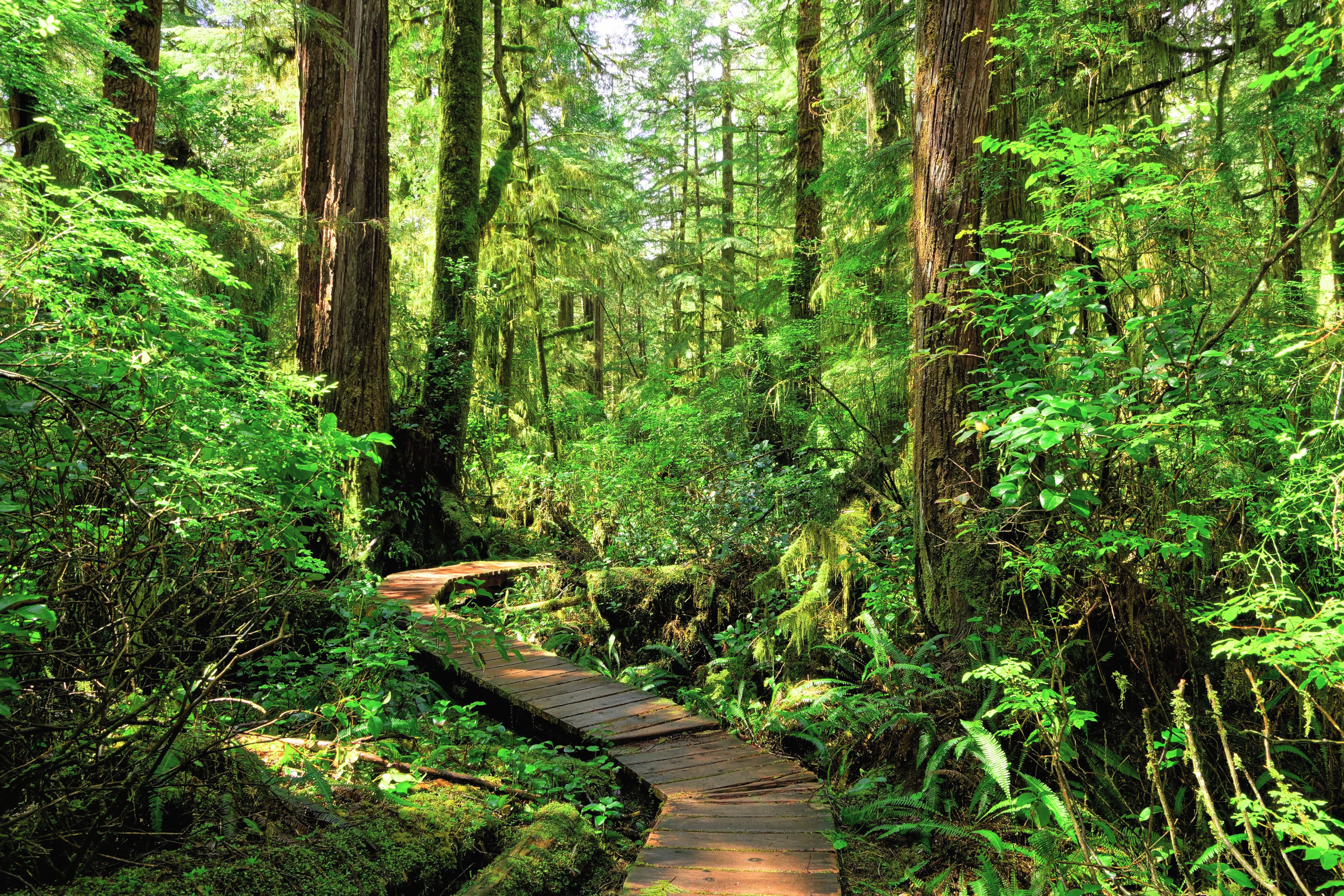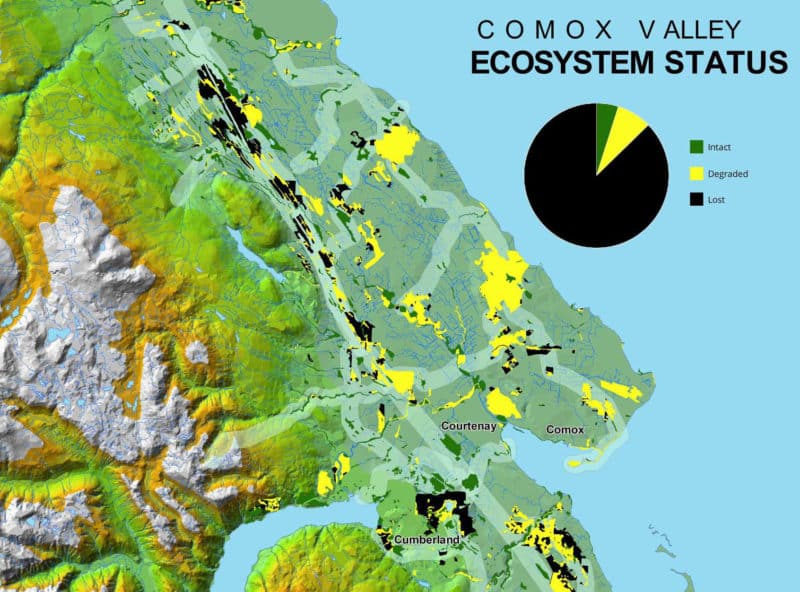UNDERSTANDING THE BALANCE
Ecosystems identified in a Sensitive Ecosystems Inventory (SEI) are often the remnants of the natural ecosystems that once occupied a much larger area. As development continues to grow in the Comox Valley these natural ecosystems become increasingly degraded, fragmented and sensitive to adjacent development activity. Some are lost altogether. Recent analysis of the 2014 SEI completed by the Comox Valley Land Trust in partnership with the Comox Valley Regional District (CVRD) revealed that less than 5% of the previously extensive and connected ecosystems remain intact.
As these sensitive ecosystems decrease in area and become more fragmented, they become increasingly valuable as habitat and are critical to protect our native biodiversity. Linking these fragmented habitats is important to the survival of plants and wildlife living in them. The SEI identifies “habitat corridors” that create linkages between these otherwise fragmented ecosystems. The CVCP works to prioritize and conserve these remaining sensitive ecosystems and direct development away from these identified habitat corridors.
If we lose what is remaining, we could lose important ecological assets that provide ecological goods and services to our communities, popular tourist destinations, culturally significant First Nation sites, and greatly diminish the biodiversity of the Comox Valley.
OUR STRATEGY
PRIORITY CONSERVATION ACTIONS
Through a compilation of conservation inventories, plans and reports, and advice from local biologists, planners, and provincial and federal environment staff; a network of natural areas have been identified which are considered to be most critical to the long-term health of the community.

PROTECTING OUR DRINKING WATER
The Comox Lake Watershed is the source of drinking water for 45,000 Comox Valley residents. Not only is the watershed the area’s source of drinking water, it also is well used by the public for a wide range of recreational activities and includes residential and industrial developments including a large waste management facility and hydro-electric generation. The watershed is within the Comox Valley Regional District and Village of Cumberland but most (65%) of the watershed is private land owned primarily by two major logging companies: TimberWest and Comox Timber. These private forest lands are governed by the provinical Private Managed Forest Land Act (2003) which supersedes local government authority. The combined impact from these multiple user groups driven by various interests, are placing the watershed’s health at risk. Frequent boil water advisories arising from water turbidity in the winter months, as well as water shortages in the summer months are consequences of the historic and ongoing land uses in the watershed.
Historically, there was no coordinated management plan for the watershed until the CVRD and local interest groups worked to develop the 2016 Comox Lake Watershed Protection Plan. Currently the CVCP and the CVLT are represented on the Comox Lake Watershed Advisory Group which is also comprised of land-owners, regulators and technical advisors.
Protection of our drinking water is an important issue for our community. In 2013, the CVCP expanded our goals to include protecting water quality, enhancing ecological values, and balancing public access with sustainable use in the Comox Lake Watershed.
* The K’ómoks First Nation has unceded aboriginal rights and title, an interest in economic opportunities and access the watershed for cultural use.

ECO ASSET VALUATION
Eco-assets are natural assets such as lakes, rivers, wetlands, aquifers, mountains, forests, riparian areas, estuaries and salt marshes. These natural features have considerable economic value to the communities where they exist, because they provide ecological “goods and services” in the form of water purification, storm water management, food production and recreation. Incorporating these assets into municipal service delivery systems in conjunction with human-built infrastructure – roads, water distribution, liquid waste management and stormwater/drainage infrastructure– contributes to a healthy, desirable, and resilient community.
In March 2016, the CVCP and CVLT worked in partnership with Project Watershed, to host the first of its kind Eco-Asset Symposium. Over 350 people attended this public forum which was followed by a day of technical workshops that explored the many aspects of eco-assets and how to incorporate them into local government planning. The Symposium attracted a diverse group of people from all across the province that included First Nations, local, provincial and federal government representatives, engineering firms, industrial corporations, members of the general public, stewardship groups, and local business owners. The symposium was fully supported by K’omoks First Nation and all local municipal governments – Courtenay, Comox, Cumberland and the Comox Valley Regional District – both in principle and financially.
In order to protect watershed health, human development and engineered infrastructure must accommodate the existing adjacent natural systems – not the other way around. The Symposium brought to light the importance of engagement of local groups to implement eco asset projects in their own watersheds. Examples of local projects now underway include:
The CVCP works to support these local groups to encourage municipal and regional government to take an eco-asset approach in future community plans and projects.

Government Policy and Land Use Development Practices
The CVCP focuses on the development of land-use policies, processes and regulations that will protect sensitive ecological areas, fresh water resources and natural systems. Over the past 8 years, our partner members have engaged in many local, municipal and regional government processes including:
- The Comox Valley Regional Growth Strategy
- Comox Valley Sustainability Strategy
- Comox Lake Watershed Protection Plan
- Village of Cumberland, Parks and Greenways Strategy
- Village of Cumberland Environmental Development Permit Area Regulation
- City of Courtenay Parks Master Plan
- City of Courtenay Tree bylaw and other related Urban Forest strategies
In 2017, the CVCP developed A Framework for Establishing Environmental Development Permit Area (EDPA) regulations to guide local governments and environmental professionals in best management practices to guide development away from our most sensitive natural areas. The Green Bylaw Tool Kit is another current resource available to help guide BC planners and local governments to implement ecologically sustainable land use practices. The CVCP is also launching a new campaign for the Comox Valley; working in partnership with the Land Trust Alliance of BC to incorporate a Conservation Tax Incentive Program for the Province of BC. The CVCP measures success by improved environmental protection through participating and engaging with local and regional governments on developing policies and regulations.
HELP US PRESERVE THE BEAUTY OF THE COMOX VALLEY
Since our formation in 1999, the Comox Valley Land Trust has protected and conserved almost 300 hectares of ecologically significant land and wildlife habitat. This success is thanks to the vision and generosity of our donors and partners. Your donation to CVLT goes directly to acquiring and protecting the natural wealth of the Comox Valley.


